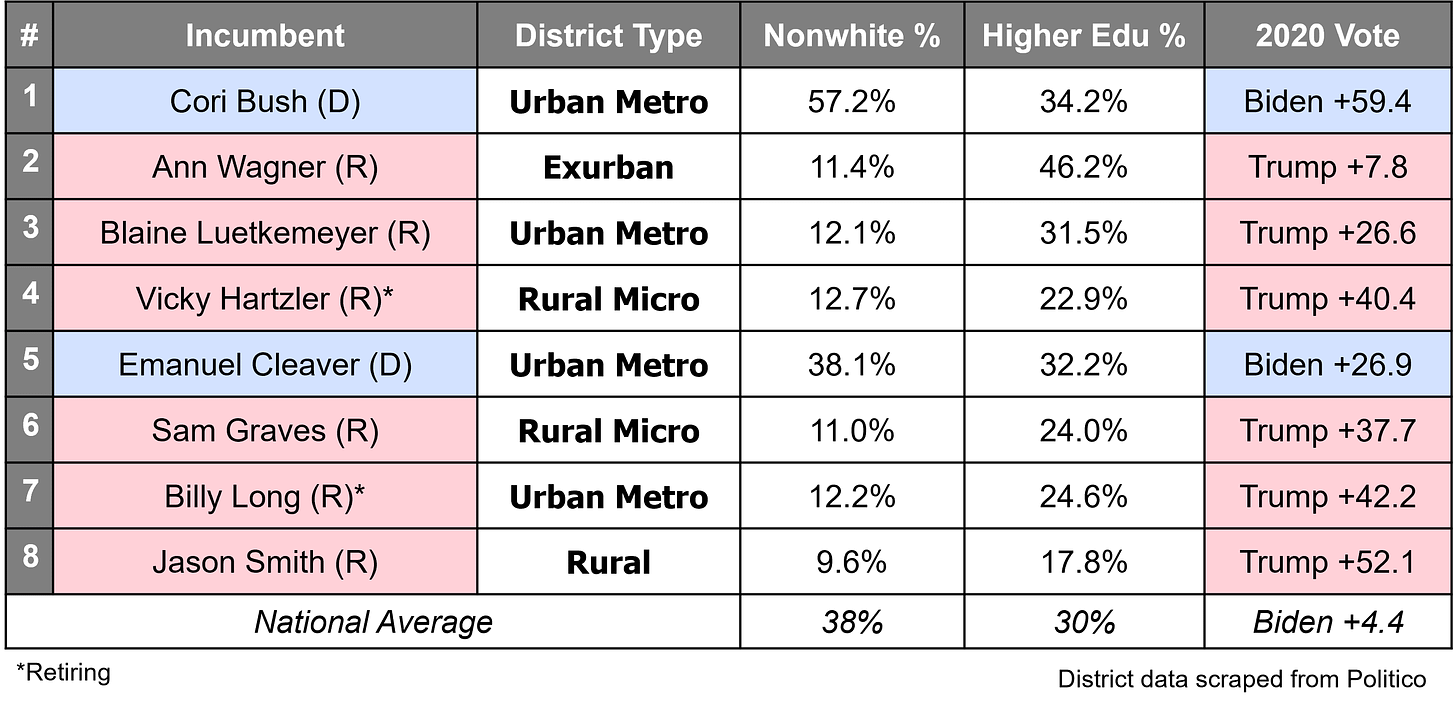Missouri: Republicans Fight Their Own to Gerrymander Kansas City
A group of far-right Republicans filibustered for 30+ hours in an attempt to pass a politically gerrymandered map.
Topline Takeaways
Republicans had complete control of the redistricting process in Missouri.
The party was split on which maps to approve as a contingent of hard-line Republicans wanted to draw Democrats out of Kansas City.
The party eventually settled on a compromise map that instead makes the state’s lone competitive district, MO-2, much more safe for the Republican party.
Who’s In Control?
Missouri’s redistricting process is governed by the state legislature and requires the governor’s signature for approval. Since the GOP holds majorities in both state houses alongside a Republican governor, Republicans had complete control over Missouri’s new congressional map. Despite holding all the power, the party still had its drama as hard-line Republicans put up a fight against more moderate mapmakers who aimed to preserve the status quo.
New District Breakdown
Two blue districts is one too many for some Missouri Republicans. After the state House passed a map that preserved St. Louis and Kansas City’s deep-blue districts, radical Republicans in the state Senate engaged in a 31-hour filibuster to fight for a map that favored their party more heavily.
-Sen. Bob Onder, advocating for a politically gerrymandered map that favors his party
These Republicans were fighting for a “7-1” map where the state’s Democratic constituency, well over 1 million voters, would be represented by a single member in the House. They aimed to do this by cracking Emanuel Cleaver's seat in Kansas City. They sought to split Jackson county in such a way that would transform a district that voted for Biden by a landslide 26 points into a district with a slight lean towards Trump. This degree of gerrymandering was too much for even some Republicans to bear. After a lengthy Senate standoff where legislators read lyrics from Fall Out Boy and Johnny Cash songs to kill time, a compromise was finally reached.
Republicans ultimately decided to keep the “6-2” map with the blue dots remaining in place for St. Louis and Kansas City voters. Instead, Republicans got creative and tried their hardest to draw a Republican leaning district in the St. Louis suburbs. The previous configuration of this district was quickly sprinting away from Donald Trump’s vision of the Republican party. Voters here supported Trump by an 11-point margin in 2016 but in 2020 that Trump’s led Biden by barely 100 votes.
The district’s House incumbent, Ann Wagner, was seeing the same trend moving against her in elections across the last decade. Wagner was first elected to Congress in 2012 and won her first few elections by wide margins of 20 or 30 points. Donald Trump’s tenure as president proved difficult for her as in 2018 she came within 4 points of losing to Democratic challenger Cort VanOstran. Wagner saw yet another close race in 2020, winning by 7 points this time. Republicans’ changes to Wagner’s district move the its expected vote toward the right by about 8 points, not quite enough to shift the district out of swing territory.
One more side effect of these changes: Republicans quite literally drew away the competition. Democratic candidate Ben Samuels withdrew his candidacy from the House primaries and claimed the changes make the district “unwinnable” for Democrats.





Thank you for the shoutout!